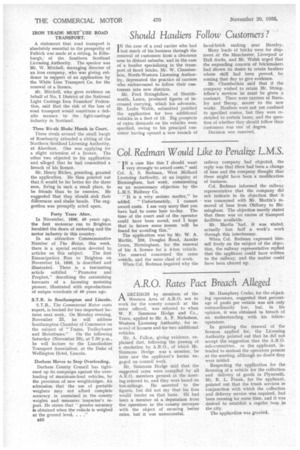Should Hauliers Follow Customers?
Page 32

If you've noticed an error in this article please click here to report it so we can fix it.
I N the case of a coal carrier who had lost much of his business through the removal of customers from a clearance area to distant suburbs, and in the case of a haulier specializing in the transport of faced bricks, Mr. W. Chamberlain, North-Western Licensing Authority, deprecated the practice of carriers who endeavoured to follow their customers into new districts.
Mr. Fred Stringfellow, of Shuttleworth, Lanes, produced figures of increased carrying, which his advocate, Mr. Leslie Walsh, submitted justified the application for two additional vehicles in a fleet of 13. Big prospects of extra demands on his vehicles were specified, owing to his principal customer having opened a new branch of faced-brick making near Burnley.
Many loads of bricks were for shipment at the Manchester, Liverpool or Hull docks, and Mr. Walsh urged that the expanding concern of brickmakers had shown its desire to retain hauliers whose skill had been proved, by coming that day to give evidence.
Mr. Chamberlain said that if the company wished to retain Mr. Stringfellow's services he must be given a. contract. There were carriers at Burn, ley and Bacup, nearer to the new works. Hauliers were not yet confined to specified routes, but they were restricted to certain bases, and the question of whether they should follow their customers was one of degree.
Decision was reserved.




























































































